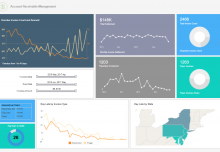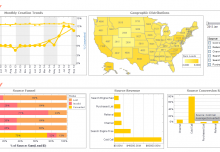This article will overview the current state of machine learning including some relevant stats, before informing you about five amazing examples of machine learning implementations.
The Machine Learning Framework: Current State
The current state of machine learning is that adoption by businesses has dramatically increased in 2018 compared to 2017. This increased adoption is in line with Deloitte Global’s 2018 machine learning report, which predicted that machine learning implementations would double in 2018 from the previous year. The same report projects implementations to double again by 2020.
However, there is a shortfall in terms of the number of machine learning implementations at individual organizations as CEOs and business executives try to define and understand the particular business benefits that these algorithms drive.
Advancements such as automated data exploration and the use of “synthetic” algorithmically generated data are driving surges in machine learning adoption as it becomes less difficult, less costly, and less time-consuming to run machine learning projects.
The point on synthetic data is particularly important considering how training a machine learning model typically requires millions of labeled data elements, which is costly and takes a significant amount of time. The synthetic data mimics the characteristics of real-world training data without the same difficulty in acquiring the data.
Another technique with excellent potential to decrease the number of examples you need to feed into a machine learning model is the idea of transfer learning. The basic premise here is that you pre-train a model to perform one task and re-use the same model as the basis for perform a second, related task in a similar domain. For example, a model that can recognize cats might be re-used to recognize tigers.
Interesting Examples of Machine Learning Implementations
- Machine Learning Portfolio Management
A really interesting use case emerging for machine learning is how it can aid with portfolio management. When people invest in a range of asset classes, whether to save for retirement or get some extra income, they build up a portfolio that often needs to be actively managed.
Portfolio management entails choosing optimal investment strategies, investing the right amounts in different types of assets, and adjusting the amounts allocated to each asset class depending on prevailing market conditions.
Wealth management companies are looking to use their treasure trove of historical asset data and combine that with machine learning techniques to develop models that can lead to more informed wealth management decisions. A 2017 FSB report revealed that AI and machine learning firms have managed assets of over $10 billion to that point, and this particular use of machine learning will only increase.
- Deep Learning for Computer Vision
Deep learning is a part of the broader machine learning family that entails the use of neural networks which are capable of learning unsupervised from data that doesn’t have labels and is unstructured. An exciting application of this machine learning subset is in computer vision.
Computer vision is an emerging and complex field that involves efforts to enable computers to see, identify, process images and videos, and obtain information from them, similar to how human vision works.
Computer vision is a multidisciplinary field, and deep learning helps computer vision because within its neural networks, deep layers can extract complicated features like faces, digits, etc from visual media.
- Chatbots for Disease Prevention & Diagnosis
Another really interesting example of machine learning emerged with the release of a health subscription service that has developed a chatbot for the prevention and diagnosis of diseases. The chatbot, developed by U.K.-based startup Babylon Health, uses machine learning to develop intelligent conversational abilities in addition to speech recognition.
The chatbot listens or reads a patient’s symptoms and then compares those symptoms against a database, before recommending an appropriate course of action, such as visiting a pharmacy or going to ER.
- Personalized Online Shopping Recommendations
As ecommerce and online media both become more competitive, it’s interesting to see how much effort leading retailers and media websites are putting into recommendation engines. These recommendation engines are powered by machine learning algorithms, and they recommend alternative things website visitors might be interested in, depending on how those visitors have already interacted with a website.
Using these engines can really drive a competitive edge, and you can expect to see more websites incorporating them over the coming years. YouTube has one of the most sophisticated recommendation engines out there, and its success is such that it drives 70 percent of what people watch on Youtube.
- Improved Credit Decisions in Banks
Given that one of the many reasons for the 2008 stock market crash began with banks making poor crediting decisions leading to an accumulation of risky mortgage-backed securities, the banks will take any help they can get to make better credit decisions going forward.
Machine learning contributes significantly to modern credit risk models. Data analytics company FICO uses machine learning to build better credit risk models, which are used to determine individual FICO scores that banks use as a marker of consumer credit risk.
Wrap Up
That wraps up this article on five amazing machine learning examples in the real world, ranging from implementations by startups to multi-billion dollar enterprises. Not only is it evident that businesses of all sizes can leverage machine learning, but the breadth of use cases across disparate industries is staggering.





